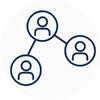Workplace Options helps employees balance their work, family, and personal needs to become healthier, happier, and more productive, both personally and professionally. The company’s world-class employee support, effectiveness, and wellbeing services provide information, resources, referrals, and consultation on a variety of issues ranging from dependent care and stress management to clinical services and wellness programs. To learn more email us at service@workplaceoptions.com.
Disclaimer: This document is intended for general information only. It does not provide the reader with specific direction, advice, or recommendations. You may wish to contact an appropriate professional for questions concerning your particular situation.
References
Alter, A. (2017). Irresistible: The rise of addictive technology and the business of keeping us hooked. London: Penguin.
Bhattacharya, S., Bashar, M. A., Srivastava, A., & Singh, A. (2019). Nomophobia: No mobile phone phobia. Journal of family medicine and primary care, 8(4), 1297.
Chadwick, J. (2022, 12 January). Time to put down the smartphone? People spend nearly a THIRD of their waking hours on mobiles by averaging 4.8 hours a day on apps, research shows. Daily Mail. Retrieved 10 June 2022 from https://www.dailymail.co.uk
https://www.dailymail.co.uk/sciencetech/article-10394221/People-spend-4-8-hours-day-mobile-apps-research-shows.html
Haynes, T. (2018). Dopamine, smartphones & you: A battle for your time. Retrieved 10 June 2022 from the Harvard University Science in Nature website: https://sitn.hms.harvard.edu
https://sitn.hms.harvard.edu/flash/2018/dopamine-smartphones-battle-time
Hilliard, J., & Parisi, T. (2019). Social media addiction. Retrieved 10 June 2022 from the Addiction Center website: https://www.addictioncenter.com/drugs/social-media-addiction
https://www.addictioncenter.com/drugs/social-media-addiction
Hunt, M. G., Marx, R., Lipson, C., & Young, J. (2018). No more FOMO: Limiting social media decreases loneliness and depression. Journal of Social and Clinical Psychology, 37(10), 751–768.
Lambert, J., Barnstable, G., Minter, E., Cooper, J., & McEwan, D. (2022). Taking a one-week break from social media improves well-being, depression, and anxiety: a randomized controlled trial. Cyberpsychology, Behavior, and Social Networking, 25(5), 287–293.
Moody, R. (Revised 2022, 21 March). Screen time statistics: Average screen time in US vs. the rest of the world. Retrieved 10 June 2022 from https://www.comparitech.com
https://www.comparitech.com/tv-streaming/screen-time-statistics
National Sleep Foundation. (Revised 2022, 12 April). How blue light affects sleep. Retrieved 10 June 2022 from https://www.sleepfoundation.org
https://www.sleepfoundation.org/bedroom-environment/blue-light
O’Dea, S. (2022, 31 May). Smartphone subscriptions worldwide 2016-2027. Retrieved 10 June 2022 from https://www.statista.com
https://www.statista.com/topics/840/smartphones
Rolfe, A. (2017, 16 June). Bank of America – Trends in Consumer Mobility Report. Retrieved 10 June 2022 from https://www.paymentscardsandmobile.com
https://www.paymentscardsandmobile.com/bank-america-consumer-mobility-report
Rosenwald, M. (2017, 24 May). Before Twitter and Facebook, there was Morse Code: Remembering social media’s true inventor. The Washington Post. Retrieved 10 June 2022 from https://www.washingtonpost.com
https://www.washingtonpost.com/news/retropolis/wp/2017/05/24/before-there-was-twitter-there-was-morse-code-remembering-social-medias-true-inventor
Copeland, R. (2022, 9 June). Unplugging from social media to recharge your battery (B. Schuette & E. Morton, Eds.). London: Workplace Options (WPO).





































